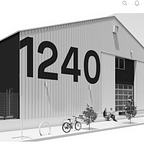In Conversation — Sandra Ono
Sandra Ono’s sculptural work is informed by history, biology and physiology. Through re-constructing intimate ultilitarian materials, Ono investigates how we examine experiences of the human body, granting dimension to internal states. This past year, her research involved her namesake, Sandra Neely Smith…
Brion Nuda Rosch: The use and reconstruction of utilitarian materials continues in your recent body of work, however the narrative has shifted. Can you provide perspective relating to your namesake?
Sandra Ono: Yes, this is the most specific and personal narrative I’ve worked with. My namesake, Sandra (Sandi) Neely Smith, was a friend of my parents who was murdered by members of the Ku Klux Klan and American Nazi Party in the Greensboro Massacre on November 3, 1979. Along with Sandra Smith, four others were killed and many others were wounded during a legal protest against the KKK at the Morningside Housing Projects in Greensboro, North Carolina.
I grew up learning about Sandra Smith from my parents and knew there were other people who were named in her memory. My father is a criminal defense attorney so he moved to Greensboro to work on the trial against the members of Klan and American Nazi Party. As a result, he knew more of the disturbing details that I was not privy to. All the Klan and Nazi members brought to trial were acquitted in 1980 and again in 1984.
With all the past and recent killings of unarmed Black people and the turn of events with our new administration, I knew it was time to further explore this history and how it relates with my practice. I’m currently in the process of connecting to a survivor from the massacre. Following my TOSA Residency I plan to visit Greensboro.
BNR: Sandra Neely Smith was an activist and nurse, who advocated for mill workers at the Cone Mills denim plant. Naturally you have adopted the material into this body of work. How are you approaching the material when considering the embedded history? Has your process (or approach) changed given the weight of this history?
SO: Sandra Neely Smith had recently earned her undergraduate degree from Bennett College where she was student body president. What is most striking and resonates with me is how tragic and unjust these killings were and the bravery and resilience of the people targeted during this attack. Sandra Smith knew she was in grave physical danger, but she still focused on gathering children who were present to ensure their safety. Despite the terror and injustice that the survivors of the Greensboro Massacre endured, they continued to organize for their rights.
I selected denim to reference the textile factory where Sandra Neely Smith was an active union organizer. Denim is a durable, utilitarian material made to protect the body. My new work includes more deconstruction of material as part of the process. Deconstructing, then reconstructing the denim to create a solid form, and finally embedding small cast objects into the form is my attempt to mirror ideas of resilience and fortitude.
The process for this work has been much slower than usual because I want to make sure in researching my namesake, I’m also researching the political climate and factors that led up to her untimely death. I’ve been reading brilliant writers such as Ta-Nehisi Coates and Bryan Stevenson to attempt to understand what factors allowed these killings to happen and to truly grasp how far back and how deep the roots of institutionalized racism are.
BNR: Prior to working with denim, your work involved dis-assembling / re-assembling intimate materials; bandages, hairbrush bristles, have you been unconsciously exploring your namesake and its related history throughout your practice? And moving forward, where does your research lead future work?
SO: My namesake has definitely influenced who I am as a person and artist. You’re right; in some ways I think have been unconsciously including parts of her in my work. My recent work also considers resilience and what we do internally and externally in order to function and continue progressing through adversity. There are some clear links.
In the future I would like to work on a project that includes the other Sandras named after Sandra Neely Smith. I am really grateful to Victoria Belco and William Goodman for their incredible generosity and support. I also want to thank Catharine Clark, Hung Liu, Stephen Beal and Kathryn Reasoner for providing me with this amazing opportunity and for making my new body of work possible.
Sandra Ono was the 2016/17 recipient of the TOSA AWARD. The Tosa Studio Award recognizes one San Francisco Bay Area artist each year, offering financial support and a studio space to help establish and further an arts career.
Sponsored by Victoria Belco and William Goodman, the award will annually provide a promising artist a $10,000 stipend and use of a private studio at 1240 Minnesota Street in the Minnesota Street Project studio building for the award period, with access to the Minnesota Street Project facilities and participation in the creative community.
Now in it’s second year — the Tosa Studio Award has selected Marcela Pardo Ariza for July 2017 — July 2018
Pardo was selected from a pool of finalists including; Indira Allegra, Sofía Córdova, Whitney Lynn, and Minoosh Zomorodinia.
The jury for this year’s award consisted of Hesse McGraw, Vice President of Exhibitions and Public Programs, SF Art Institute, artist and arts supporter Lava Thomas; and Tanya Zimbardo, Assistant Curator of Media Arts, SFMOMA.
